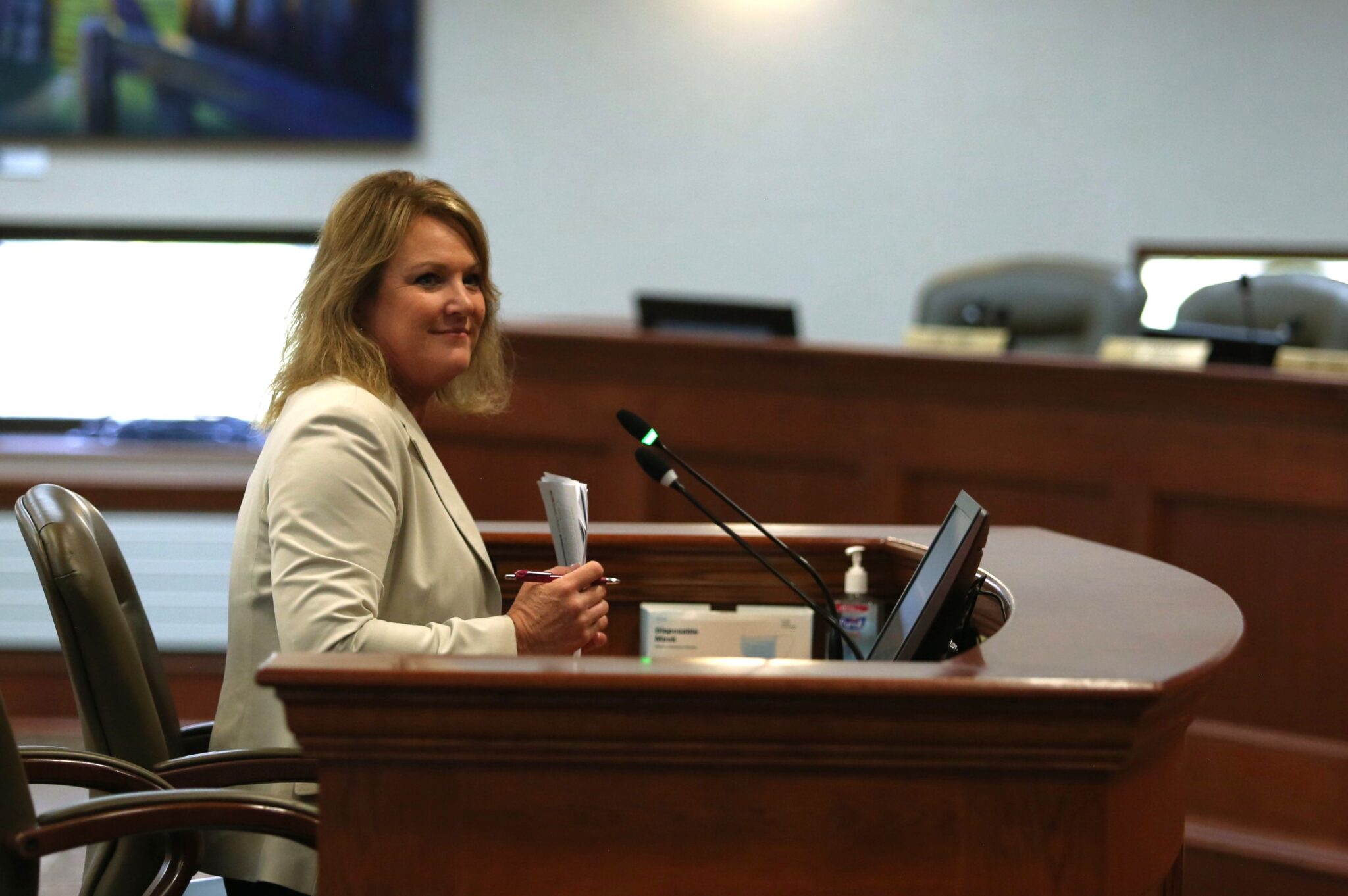
Joshua Haiar, South Dakota Searchlight
Health care industry representatives voiced concerns to lawmakers Tuesday in Pierre regarding newly finalized federal staffing standards for nursing homes.
“This is an unfunded mandate being placed on nursing homes,” said Tammy Hatting, chief operating officer of the South Dakota Association of Healthcare Organizations.
She called the new requirements a threat to nursing homes nationwide.
“We have to start talking about, ‘How do we prepare for this threat?’ Because the clock is ticking, the deadlines are out,” Hatting said. Her comments came during a hearing conducted at the Capitol by the Legislature’s budget committee.
The Centers for Medicare and Medicaid Services finalized the new rules for Medicare- and Medicaid-certified long-term care facilities in April. The agency said the rules “affirmed its commitment to hold nursing homes accountable for providing safe and high-quality care.”
The new rules say nursing homes must complete a facility assessment by Aug. 8.
By May 10, 2026, for urban facilities and May 10, 2027, for rural facilities, there must be enough staff to give each resident 3.48 hours of care daily, and at least one registered nurse on-site 24/7.
By May 10, 2027, for urban facilities and May 10, 2029, for rural facilities, at least 0.55 of the 3.48 hours of daily care per resident must come from a registered nurse and 2.45 hours must come from a certified nurse assistant.
The rules define areas with a population of 10,000 or more as urban. Hatting said her organization is seeking clarity about how areas are defined and is lobbying to raise the population threshold defining an area as urban.
Hatting said the requirement to have a registered nurse on-site 24/7 is the biggest immediate concern. She said the state had 1,232 open registered nurse jobs as of April 24, and 15.1% of registered nurses are expected to retire in the next five years.
Hatting said 18 nursing homes in the state closed from 2015 to 2023, many due to a caregiver shortage.
A new health care industry-led analysis found that 96% of South Dakota’s nursing homes don’t meet the new rules. They will need to hire 299 more staff members, which will cost about $19.7 million. Nursing homes might limit new residents, reduce their number of beds or close down, according to the report.
South Dakota Health Care Association Executive Director Mark Deak shared his concerns about the staffing requirements with legislators.
“Where on earth would we find these people?” he said.
Hatting said various congressional bills have been introduced with aims ranging from stopping the rules to providing up to $400 million per year in grant funding to states for long-term care workers.
Health care industry officials said they’re urging South Dakota’s congressional delegation to take action, and asking the Centers for Medicare and Medicaid Services to reconsider and roll back some of the rules.
